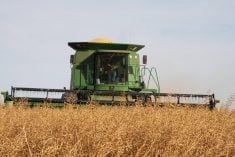There’s never enough of it, yet so much depends on setting time aside to think and plan for the future. Farm transfers can be smooth or bring families to the verge of self-destruction.
If Saskatchewan Agriculture’s Lyle Darwent has learned one thing in his career providing advice to producers, it’s that making time to talk about succession is as important as anything else in the business of farming.
“From the moment a farmer starts to acquire assets and build equity into their operation, questions about succession need to be asked,” Darwent said.
Read Also

Europe holds promise for Canadian lentils
Pulse Canada is trying to help boost lentil consumption in Europe, which is already the fourth largest market.
“Farm families should start exploring how they will integrate their children in the operation as early as possible.”
Even the best-laid plans may not come to fruition. Children may develop other career interests, but planning may also help foster an interest in farming.
“Typically on a family farm, children may be invited by their parents to rent additional land or to buy some livestock,” he said.
“Parents are in a position to offer their kids the use of machinery and facilities to help them out. They may be willing to consider ‘sweat equity’ as payment through a machinery-labour exchange.”
As parents become older, they no longer want to expand the farm.
“The children will be more willing to invest in additional assets. Generally the farm size will have to increase if the goal is to develop a farm operation that will support two or three families, depending on the number of children who decide to farm.”
The ownership decision-making process is important to iron out, as is the labour and management factor. Parents have a wealth of experience and wisdom but children bring new ideas and a fresh look at the operation.
“It’s all good,” Darwent said.
However, succession planning also involves a serious psychological challenge that can make or break the process. It’s the human factor and it tends to be overlooked.
“Very often, the mother gets caught in the middle, for example, between a son and a father,” Darwent said.
“In working toward a successful farm transfer, zero tolerance is nobody’s friend. Everyone must accept that there is more than one way of getting positive results. Sometimes parents find it difficult to accept that. Understandably so, because parents are employers and partners and kids are employees and junior partners. All partners come with their own sets of values.”
He said the only way to address the problem in a meaningful way is to discuss everyone’s goals and how they match the family’s goals. Sitting down and taking the time to discuss issues at length with a clear head is the only route to success.
Darwent has this advice for those who face such a challenge:
“Look at successful farms in your area. Normally, family members and partners in these operations have learned to work together. And when families have gone through this process, they get a real sense of accomplishment when things work. On the other hand, when you see family farms break up, the efficiencies of the whole intact operation disappear. There is always a measure of sadness when that happens.”
If farmers are serious about succession planning and are willing to invest in ensuring a smooth farm transfer, the agricultural policy framework’s new federal-provincial renewal program makes matching funds of up to $8,000 available under Specialized Business Planning Services through the Canadian Farm Business Advisory Services. The money can be used to hire a consultant to prepare for the future.














